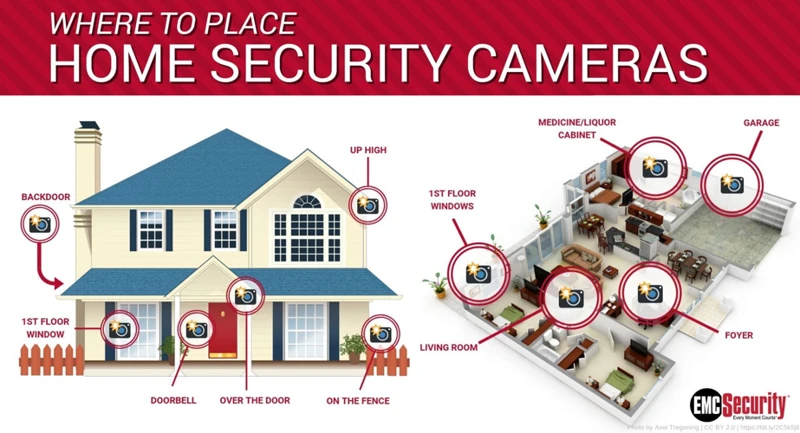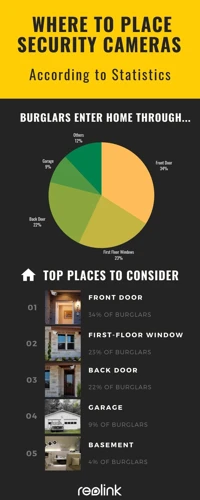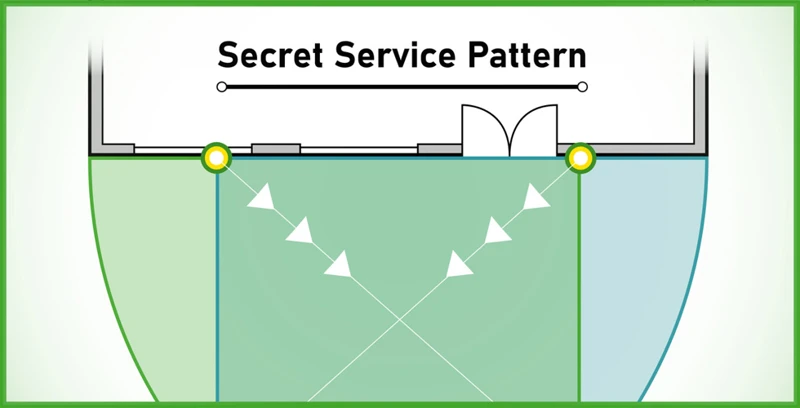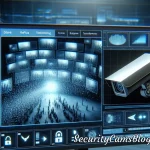In today’s world, where safety and security are of paramount importance, outdoor video surveillance has become an indispensable tool for homeowners, businesses, and public places. The effectiveness of a surveillance system, however, heavily relies on the strategic placement of cameras. In this comprehensive guide, we will explore the best practices for outdoor video surveillance placement, ensuring that your security system provides the maximum coverage and deters criminal activities effectively.
Understanding the Basics of Outdoor Video Surveillance

Before diving into the specifics of camera placement, it’s crucial to understand the basics of outdoor video surveillance. This includes familiarizing yourself with different types of cameras, such as dome, bullet, and PTZ (Pan, Tilt, Zoom) cameras, and understanding their respective strengths and ideal usage scenarios. Additionally, factors like camera resolution, field of view, and night vision capabilities play a significant role in determining the effectiveness of your surveillance system.
Assessing Your Security Needs

The first step in placing your outdoor surveillance cameras is to assess your security needs. This involves identifying potential threats, determining the most vulnerable areas of your property, and considering privacy concerns. By conducting a thorough assessment, you can tailor your surveillance setup to meet your specific security requirements.
Front Door Surveillance

The front door is one of the most common entry points for intruders, making it a critical area for camera placement. Positioning a camera above the front door allows you to monitor everyone who approaches your home, including delivery personnel, visitors, and potential trespassers. Ensure the camera is placed at a height that prevents tampering but still captures clear facial images.
Back and Side Door Monitoring
Back and side doors are often targeted by burglars due to their less visible locations. Similar to the front door, cameras should be placed at a height that provides a clear view of anyone entering or exiting, while being out of reach to avoid tampering. Consider using cameras with motion sensors to alert you of any activity in these less frequented areas.
Garage and Driveway Coverage
Garages and driveways are not only access points to your home but also house valuable items such as vehicles, tools, and sports equipment. Surveillance cameras covering these areas can deter theft and vandalism. Cameras with wide-angle lenses are ideal for monitoring these expansive areas.
Yard Surveillance
Monitoring your front and backyard can help in detecting suspicious activities and keeping an eye on pets and children. For yard surveillance, opt for weatherproof cameras with night vision capabilities. Placing cameras at strategic points that cover the yard entrances and exits, as well as any secluded areas, is essential.
Fence and Perimeter Security
Securing the perimeter of your property is vital in preventing unauthorized access. Cameras placed along the fence line should cover all potential entry points and blind spots. In some cases, PTZ cameras may be used to monitor large perimeter areas, providing the flexibility to zoom in on specific activities.
Ensuring Privacy Compliance
While setting up your outdoor surveillance system, it’s crucial to ensure compliance with local privacy laws. Avoid pointing cameras directly into neighbors’ homes or public spaces where people expect privacy. It’s always a good practice to have a conversation with your neighbors about your surveillance setup to preempt any privacy concerns.
Lighting Considerations
Proper lighting is essential for capturing clear video footage, especially during the night. Ensure that areas under surveillance are well-lit, either through natural lighting or by installing additional light sources. For areas with low light, consider using cameras equipped with infrared night vision.
Vandalism and Tamper Protection
To protect your cameras from vandalism or tampering, consider using vandal-proof camera housings and placing cameras out of easy reach. Additionally, wireless cameras can be used in areas where wiring can be easily cut or damaged.
Remote Access and Monitoring
Modern surveillance systems offer remote access and monitoring capabilities, allowing you to view live footage from your cameras on smartphones, tablets, or computers. When placing your cameras, ensure they are within your Wi-Fi network’s range or consider using a wired connection for more distant locations.
Maintenance and Regular Checks
Regular maintenance is crucial to ensure your outdoor surveillance system remains effective. This includes cleaning camera lenses, checking for obstructions, and ensuring all components are functioning correctly. Periodic testing of the system can help identify any issues before they become problematic.
Professional Installation vs. DIY
While DIY installation can be cost-effective, professional installation ensures that your cameras are placed optimally for the best coverage and security. Professionals can also provide valuable advice on camera types and positions that you might not have considered.
When setting up an outdoor video surveillance system, placement is just one piece of the puzzle. To ensure your surveillance system operates effectively and efficiently, consider exploring our comprehensive guides. Learn about maintaining your system with our article on outdoor video surveillance maintenance. Discover the best practices for camera setup in our guide on outdoor surveillance camera setup. For those installing a new system, our piece on outdoor video surveillance installations offers valuable advice. Gain insight on how to access your surveillance feed remotely with information from our article on accessing outdoor video surveillance. And, if you’re considering a hybrid system, our discussion on indoor-outdoor video surveillance could provide the perspective you need to make an informed decision.
Conclusion
The placement of outdoor video surveillance cameras plays a critical role in the effectiveness of your security system. By following the best practices outlined in this guide, you can ensure comprehensive coverage of your property, deter criminal activities, and enjoy peace of mind. Remember to assess your security needs, comply with privacy laws, and consider professional installation for optimal camera placement. With the right strategy, your outdoor video surveillance system can provide the security and surveillance necessary to protect your property and loved ones.







